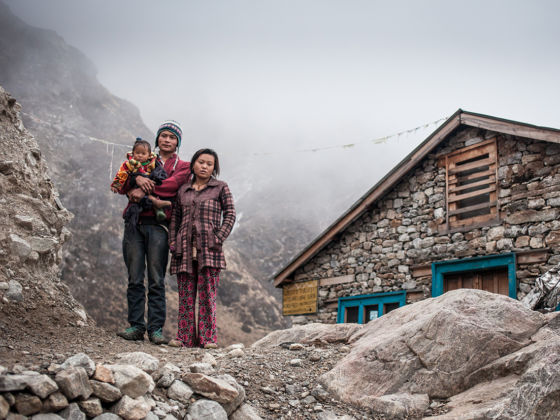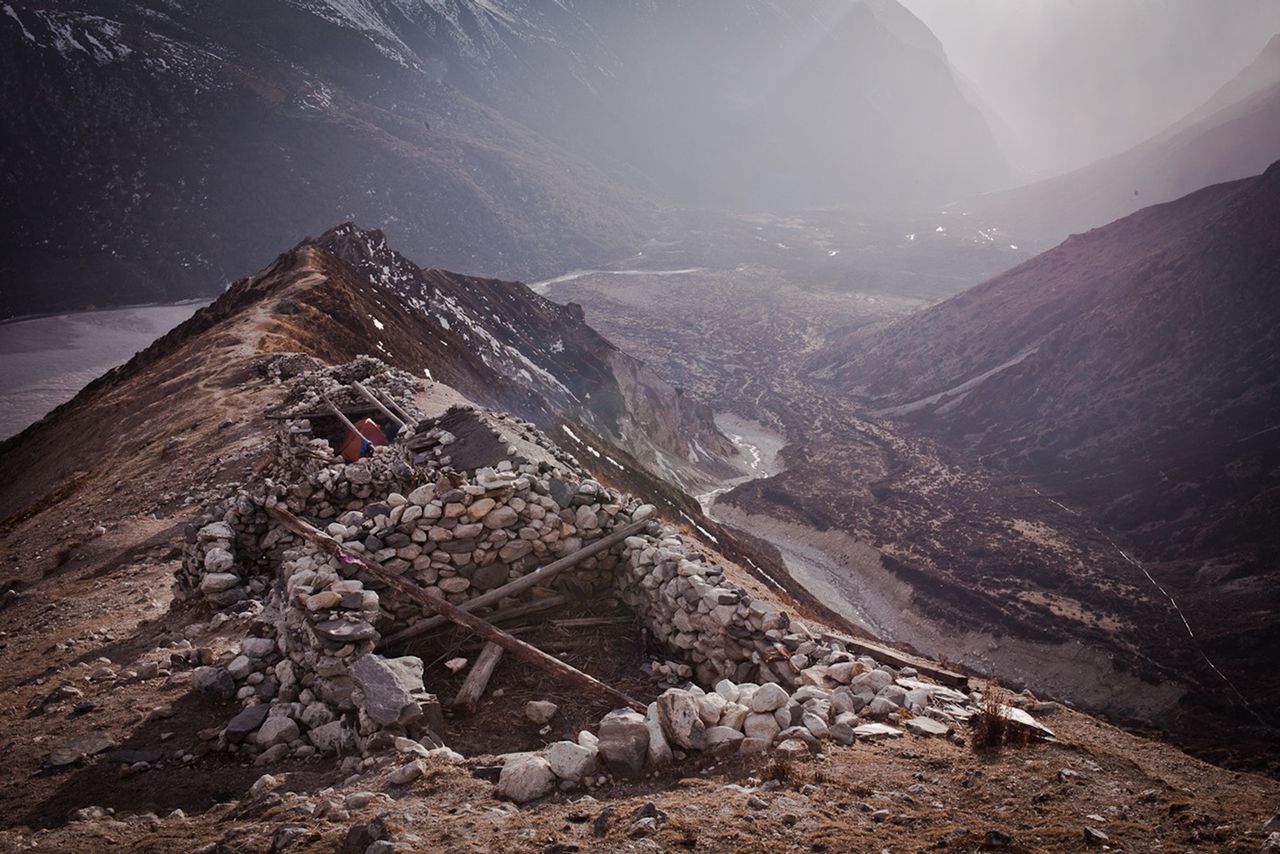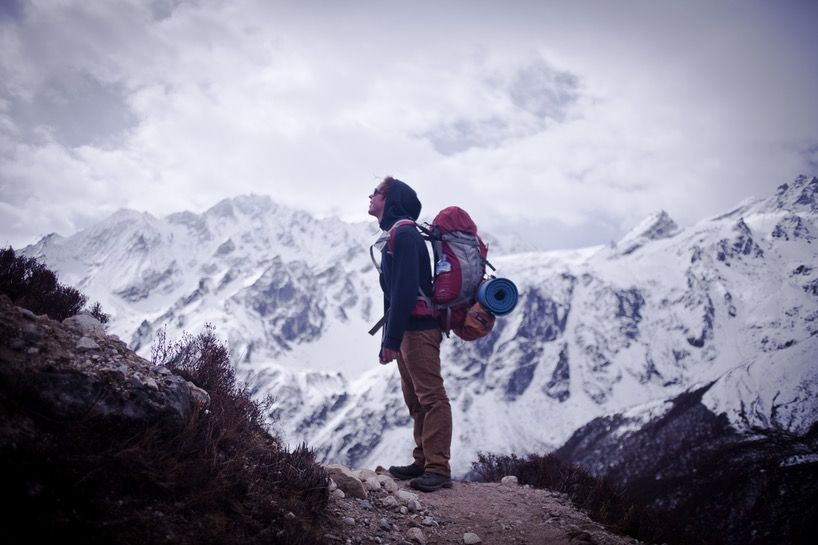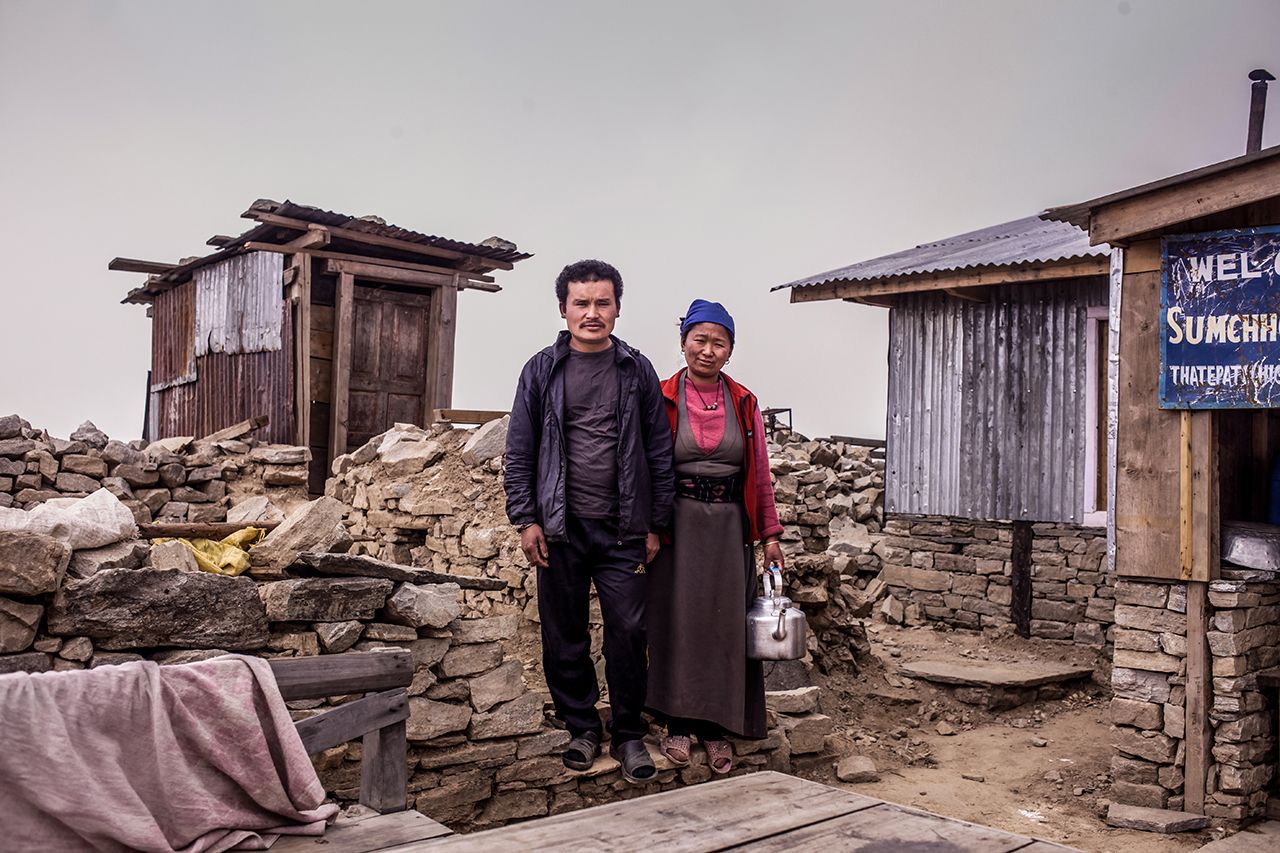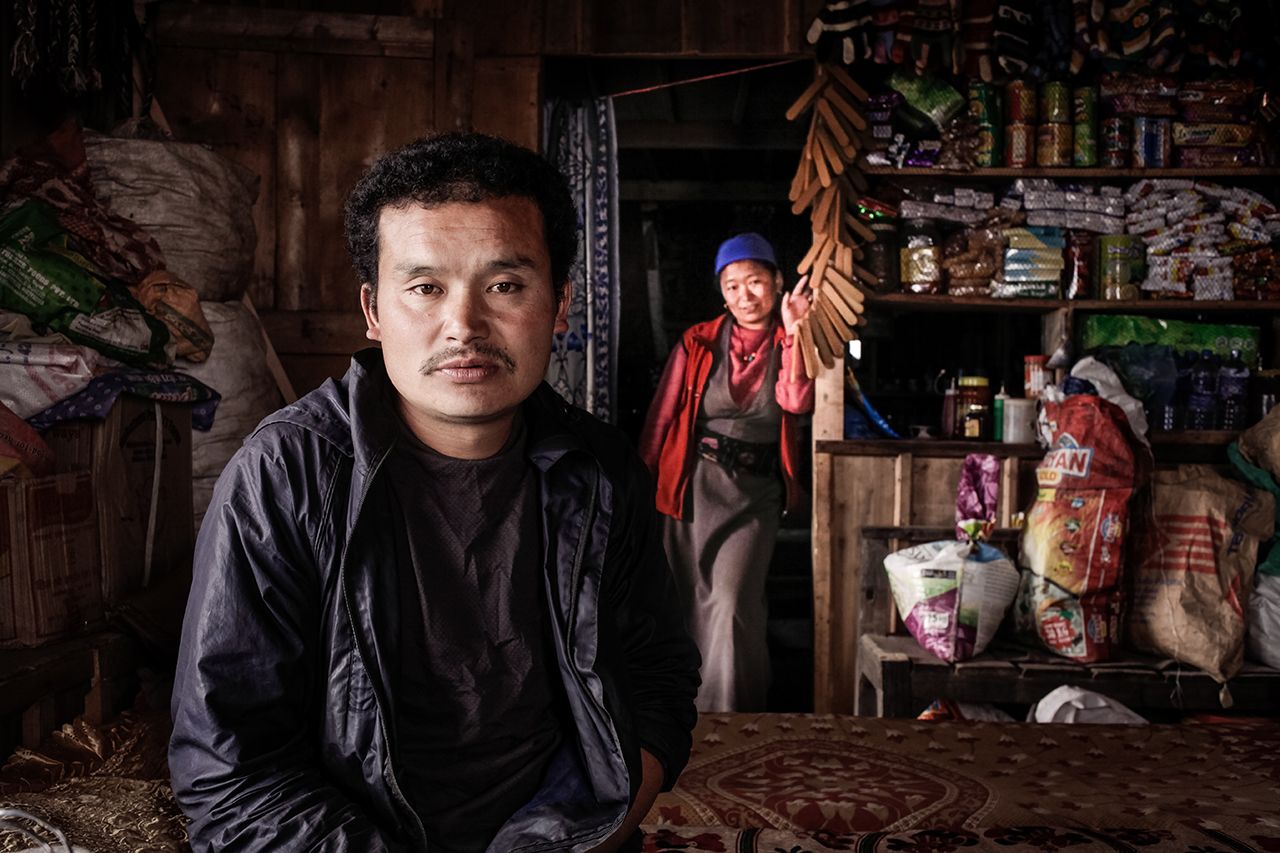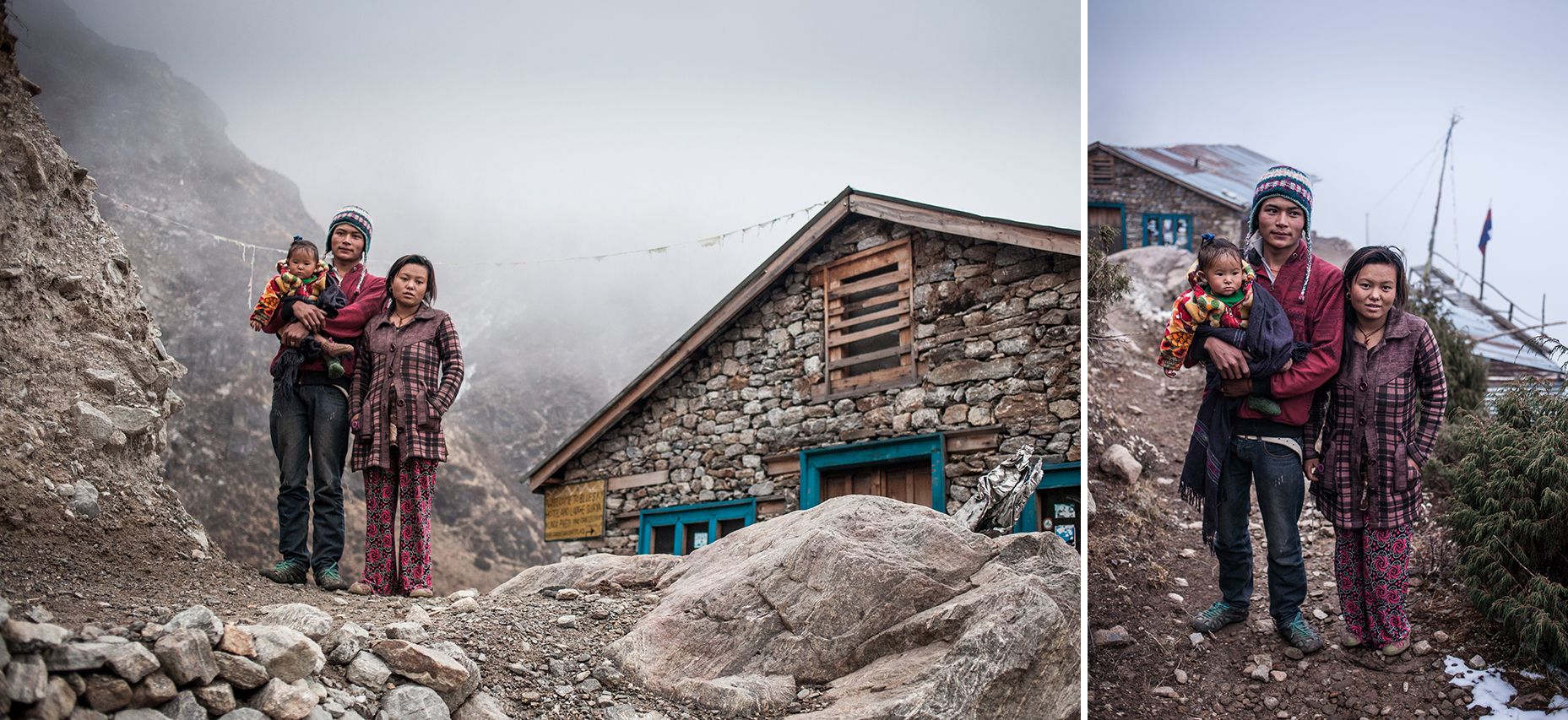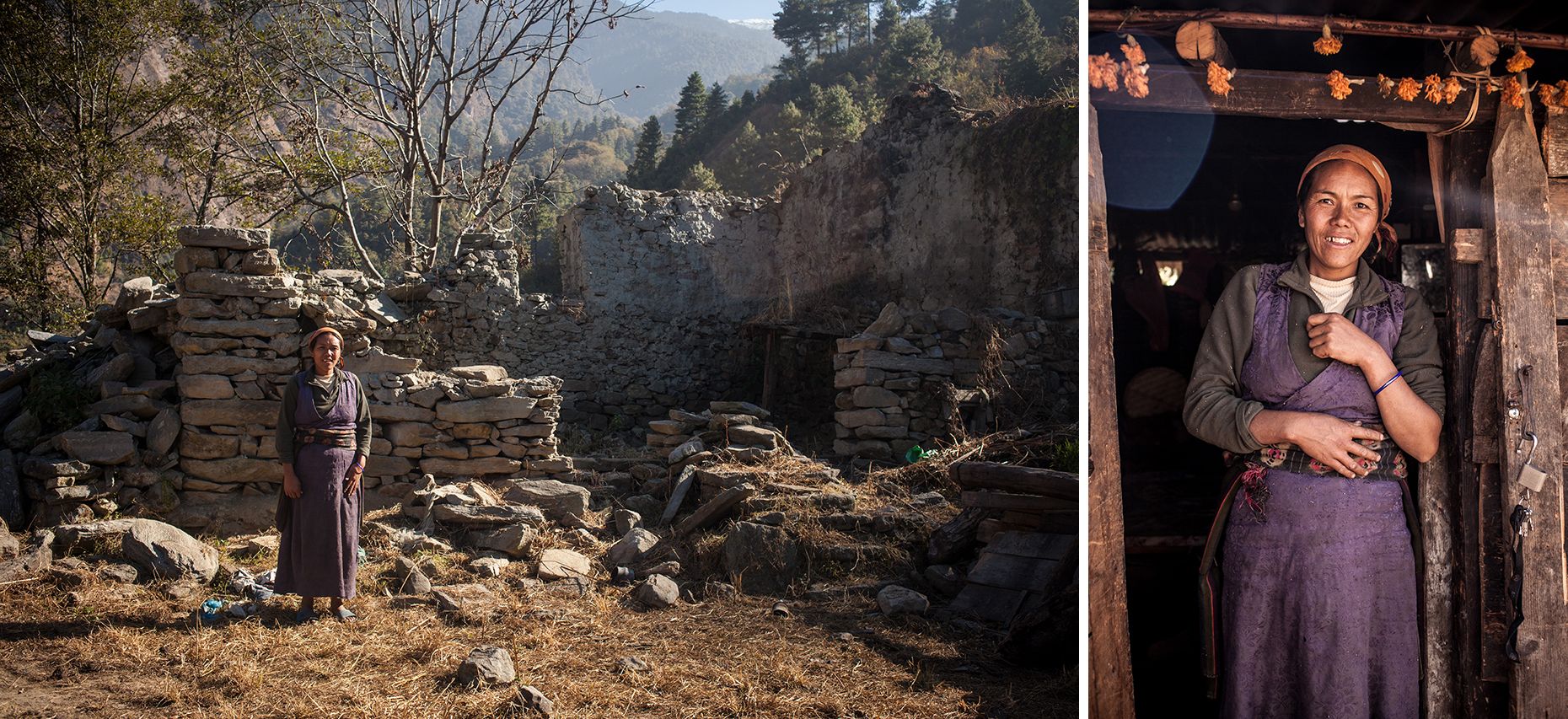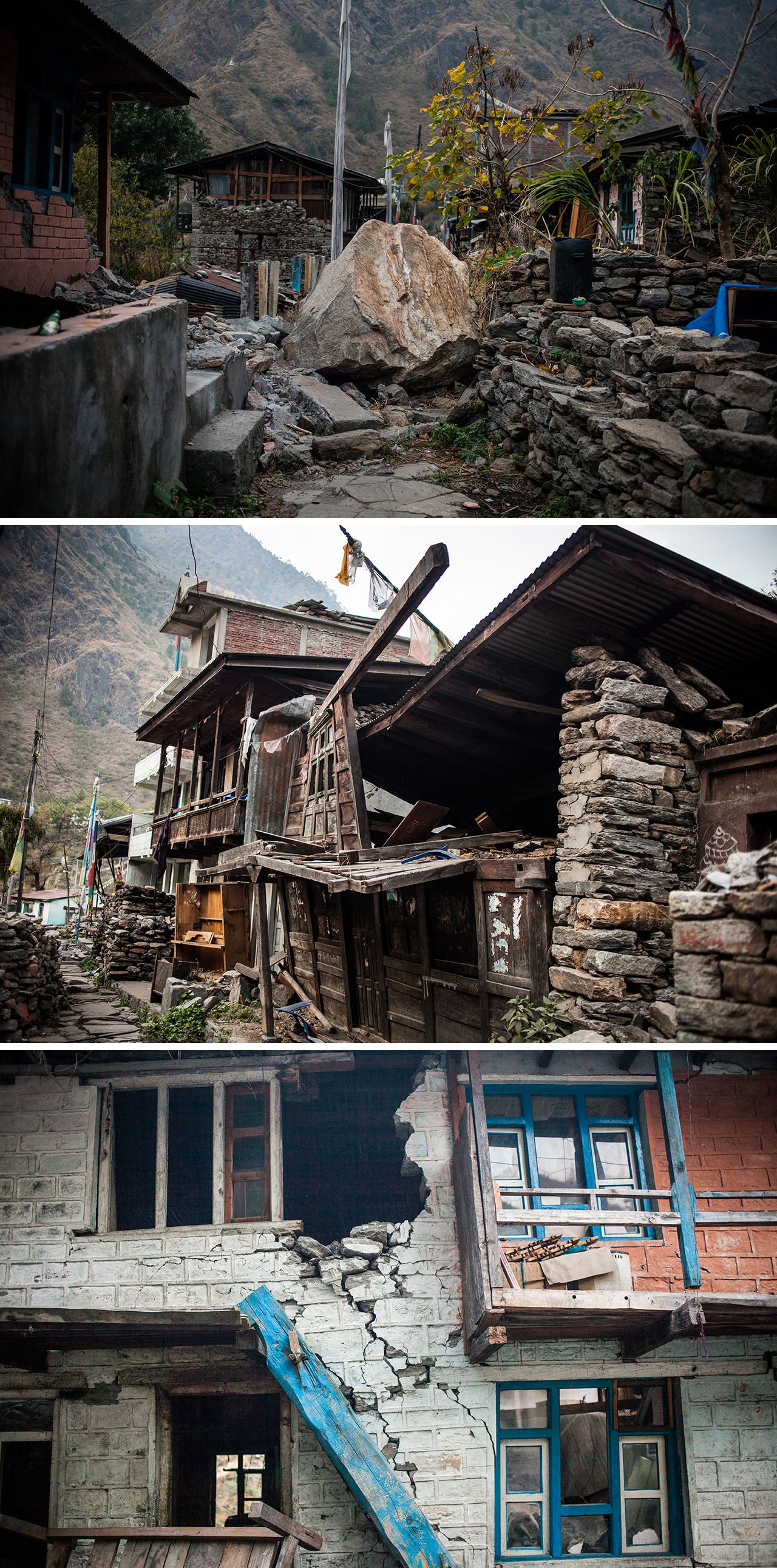After the Quake
Reconstruction and trekking in the Himalayas
The Gosainkund trek is one of the most popular routes in the Himalayas, but what is it really like for trekkers and local businesses after the devastating 2015 earthquakes?
Trekking in Nepal can be a flourishing industry, but it is dependent on tourists who come to the Himalaya to spend their money.
Since the earthquakes in April and May of 2015 and the fuel blockade on the Indian border later in the year, the world has been receiving mixed messages. Nepal’s official stance is optimistic, launching a social media campaign, #iaminnepalnow, encouraging apprehensive tourists to return to the trails, maintaining the routes destroyed in April have been reopened and the ever-growing Himalayas are stable once again.
Even the popular Langtang trek, where over 250 people were reported missing after the April 25th earthquake, has been cleared by the army and is reportedly open for business. Yet, this optimism is not reflected in the experience of those who earn their livelihood on the trails.
Tremors still reverberate in Kathmandu and the mountains to the north.
The price of gas has skyrocketed because supplies from India cannot make it across the border. As a result, locals report that their incomes are down by at least 75%. For those involved in the trekking industry there is little to do but persist. Before the earthquake, running a guesthouse or working as a guide or porter was good business.
Before the earthquakes, in Langtang National Park, about 10,000 tourists bought park permits and TIMS Cards (Trekkers Information Management System) at approximately $50 USD per head. Then, they would embark on one of three treks, the Langtang Trek, accounting for 60% of footfall according to lodge owners, the Gosainkund Trek (40%), and the Tamang Heritage Trail, more of a detour appealing to those who could afford to spend a little extra time and money after they had finished one of the two more popular routes. Money from foreign economies was constantly being injected into the local economy.
Trekkers need beds to sleep in, food to eat, clean water to drink, guides to show them the right trails to walk on and porters to carry their bags.
The residual fear of a natural disaster and wariness over political tension has seen a marked decline in foot traffic. Nima Sherpa owns a lodge in Kutumsang, which although it is outside the borders of Langtang National Park is the first stop on the Gosainkund Trek from south to north. The initial earthquake leveled every building in Kutumsang. There were injuries but no loss of life.
Since then, Nima has built a temporary wooden structure to house trekkers who pass through, next to the makeshift home where he, his wife and son now live. He estimates business is down 85%. The government has promised 200,000 Nepali rupees, about $2,000 USD for homes that were destroyed, but have promised nothing for broken businesses like Nima Sherpa’s guesthouse. Regardless, they were supposed to pay the lump sum by Dasain festival, which had passed at the time of this interview, and had only delivered 22,000 NRS, equivalent to $220 USD. Rumours circulate.
Government engineers are supposed to approve any building project before it goes ahead, but there has simply been no sign of them yet. If they don’t give the go ahead, or if local people build before the government gives them the promised sum, they will be ineligible for compensation. It’s a Catch 22 situation. If the government holds off until the people are forced to rebuild out of their own pocket they are off the hook. Nima is well aware of this, but will run a temporary home and business for a few years just to see what happens stating,
“We cannot depend on the government. Even if we have to borrow money, we need to rebuild our home and run our business.”
The situation is harder for those who operate guesthouses within Langtang National Park. Jimbu Sherpa and his wife, Kanchi Helmu Sherpa, operate a lodge at Thadepati Pass. Unlike Kutumsang, which is a village, Thadepati Pass is only a stop for trekkers. Before the quake, there were three lodges here but all were completely destroyed.
Jimbu and Kanchi are the only ones to rebuild though their new guesthouse is less than half the size of their previous property. Like a recycled phoenix, their guesthouse has risen out of the rubble using found materials as it is illegal to cut down green wood within the park. The stones, though fallen, are undamaged and anything new has to be carried up the mountain at extremely inflated prices. Only the windowpanes, shattered, must be replaced entirely.
As their business is within park jurisdiction, and they don’t own the land outright, they have to pay a royalty fee for the land they occupy — in their case 90,000 NRS ($900 USD.) Across the park the royalty fee goes up by 10% annually. Despite the destruction of their property in the earthquake and the subsequent nosedive in tourist traffic (Jimbu estimates a 90% decline) the National Park still demands payment. To make matters worse, his home in Melamchigaon, a village further down was also destroyed. Jimbu is desperate.
“If we still have to pay the royalty, our only option will be to leave this place and open a lodge on our private property…”
Between Thadepati Pass and Phedi, the last stop before the steep climb to Gosainkund Lake, the route is difficult. The trail snakes along the south face of a steep range now marred by at least fifteen landslides, a few of them very challenging. The route, which normally takes one day even for slow hikers, now takes two. Jimbu Sherpa told us a foreign trekker was killed near Ghopte when the quake brought parts of the mountain down. Between landslide areas, boulders, conspicuous because of their lack of moss and position in the middle of the trail make it hard not to feel apprehensive. This is no place to linger.
There is only one operational guesthouse between Thadepati and Phedi, in Ghopte, but its precarious position straddling a ridge between landslides caught beneath a sagging face of granite make it an unappealing place to spend the night.
Phedi comes as a welcome sight, located slightly higher and away from under the looming rocks of the previous day and a half.
There are two guesthouses here, both damaged and repaired after the quake in anticipation of the autumn tourist season. Dawa and Lakpa Sherpa run Hotel Blue Sky. They too must pay a royalty fee of 90,000 NRS despite the damage and the downturn in tourism. They say they are losing even more business because the route is bad now.
The national park has done nothing to repair the trail. Instead, herders and hotel owners have had to pick their way through the landslides creating the difficult traverse from Thadepati Pass to Phedi. Langtang National Park has stated they will do nothing to make the way safer until hoteliers pay their royalty fees, some of which have been outstanding for years. Effectively, the park is holding guesthouse owners to ransom.
Dawa and Lakpa also tell us that three and half years ago, the National Park Authority informed the guesthouse owners that in five years, the land their lodges reside on will be put up for tender, effectively sold to the highest bidder without any concessions towards the families that have held leases here for decades.
Dawa and Lakpa have the right to rent land here, because their families held herding rights in this area before the park was designated in the 1970s.
Gosainkund is an important Hindu and Buddhist pilgrimage site and when more tourists started visiting the area, enterprising herders set up stalls to sell tea and then lodges for weary travellers. According to them, the national park was founded and a royalty fee structure implemented only when the government realized how lucrative trekking could be. If the Nepali government follows this policy through, Dawa, Lakpa, and all the other guesthouse operators leasing their land from Langtang National Park have a year and half until the land on which their businesses reside is put up for tender. Unfortunately, the earthquakes and the fuel blockade mean they will have even less money to bid on the plots than they would have had otherwise.
A few hundred metres beneath Laurebina Pass, Ram Sherpa and his son are picking through the rubble of their guesthouse. The lofty position of Ram’s lodge, approximately 4,100 metres above sea level, meant Ram was often coming to the aid of trekkers with altitude sickness and injuries suffered in accidents.
Once, Ram Sherpa delivered a 106-kilogram man with a badly broken leg to safety, carrying him all the way down the mountain on his back.
Ram is a small man, and can’t weigh more that 55 kilos himself. In the hours after the initial quake, Ram rescued five visitors who were in trouble on the mountain. Now, there is nobody coming to Ram’s aid. He doesn’t have enough money to rebuild his lodge, yet he is still expected to pay the park royalty fee for the plot of land his pile of rubble occupies. According to the lodge owners in Phedi, failure to pay will result in an additional fine.
High in lakeside Gosainkund, guesthouse owners were luckier than their neighbours. All the lodges survived the earthquake, but they were damaged and business is down by the same percentage as places below. Tempa Sonam Tamang who has to pay a 1.25 Lakh NRS or $1,250 USD park royalty fee because of his prime location, is renting the guesthouse from the owner on a 5-year contract. Despite these overheads and the cost of paying for goods to be carried to 4,380 metres above sea level, business was good enough before the quake to make it worthwhile. Now he is unsure of the future. His contract is up at the same time the lodge is supposedly up for tender.
When, and if, the land is to be bid upon, if the guesthouse owner is outbid, they stand to lose not only their lodge, but also the land it stands on.
Even if the structure was built entirely with the lodge owner’s own capital, because it is made from wood, stone and mud from within the boundaries of Langtang National Park, the owner only has rights to the stove and utensils.
On the way back down, coming through Laurebina, lodge owners Pasang Tamang and Tashi Wangmu Tamang face similar problems. Although business is down by an estimated 95% and they are still being made to pay a 90,000 NRS royalty fee to the park they are being a little more proactive about their situation.
According to the Nepali government, their lot will be up for tender in a year and a half. They have requested that the tender be postponed for ten years and the royalty fee be waived for two years so they may recover their losses. However, they’re unconvinced their appeals will bring relief and when asked if they will protest say,
“There is trouble enough already.”
In Mung Kharka, there exists some of the only optimism left on the Gosainkund trek. Pema Tamang and her family live on an idyllic piece of land at 3,000 metres. Unlike the aforementioned guesthouse owners, they are lucky enough to own their own land despite its location within the national park, and as such, they can do with it as they please and are exempt from paying the royalty fee.
They have a flourishing agro-business, supplying tomatoes and potatoes to the lodges higher up, as well as keeping chickens, cattle and goats. Their guest lodge was damaged in the quake and business has seen a dramatic decline, but because they have taken the opportunity to diversify their assets, they are in fact now doing better.
Thulo Shyabru is a village near the bottom of both the main trails in Langtang National Park. Kanxa Sherpa and Chheten Dolma Sherpa live at the unfortunate end of town as their land is on the Langtang trek and not the Gosainkund trek. On the same day as the first earthquake, which saw a huge loss of life on the Langtang trail, a massive landslide destroyed the route just past their home.
It is still impassable and since the quake, they haven’t seen a single tourist walk by. The Langtang trail is still accessible, but now the only access to the route is on the other side of the valley. They own their own land, so they don’t have to pay the royalty fee to the park, but their home, their guest lodge and their livelihood have been largely destroyed. Kanxa estimates they have lost 75% of their income since the quake — besides owning a lodge he had worked as a porter and Chheten Dolma sold hand loomed textiles and made food for tourists on the trail.
“Without tourism,” Kanxa says, “Our life is very hard. It is impossible to live.”
The Langtang trek is the trail to the Kyanjin Valley, and although it no longer passes Kanxa and Chheten Dolma Sherpa’s home in Thulo Shyabru, it is open once again according to the Nepali government.
However, as of December 2015, very few of the guesthouses are open and locals are afraid to go. Their belief is that bad spirits haunt the trail between the Lama Hotel and Kyanjin Gompa, a stretch where many perished and many are still missing. This is both superstition and an expression of the real, palpable danger. Fears live on in recent memory of the gargantuan forces moving deep beneath the ground as we trek.
Syabru Besi on the highway is the first and last stop for most tourists who visit Langtang National Park. It has seen similar damage to higher towns on the trail and a similar decline in tourism. Materials are much easier to come by here as they can be trucked in from the rest of Nepal or over the border from Tibet. New Syabru Besi, which is on the highway that runs along the west bank of the river, is almost fully repaired. Old Syabru Besi, on the other side is still heavily damaged.
The twisted buildings look as if they’ve emerged from a tornado. Beams that once supported them, are splayed out like the limbs of a giant spider.
Porbu Sangbu Sherpa ran the OK Guest House here before the quake but he doesn’t yet have enough money to rebuild. Just like Ram Sherpa, he is still required to pay a royalty fee to the park, in his case 45,000 NRS, even though his guesthouse is a pile of rubble. Despite this adversity, Porbu is optimistic. According to him, a new dual carriage highway linking Tibet and India paid for entirely by China is set to open in six months and will pass through Syabru Besi. Money and tourists from Nepal’s affluent neighbours will flood the highway town and he will be able to rebuild his business. He thinks the coming spring trekking season will see a multitude of visitors descending on the trails once again.
Sangbu has reason to be hopeful. Nepal has dealt with political unrest and natural disasters before. The tourist industry has always bounced back. Few countries measure up to Nepal’s natural beauty and the hospitality of its people. And yet, although hardship is nothing new in the mountains, little or nothing is being done to alleviate the pressure felt by families and business owners in these hard times.
This article originally appeared on Maptia and is republished here with permission.
